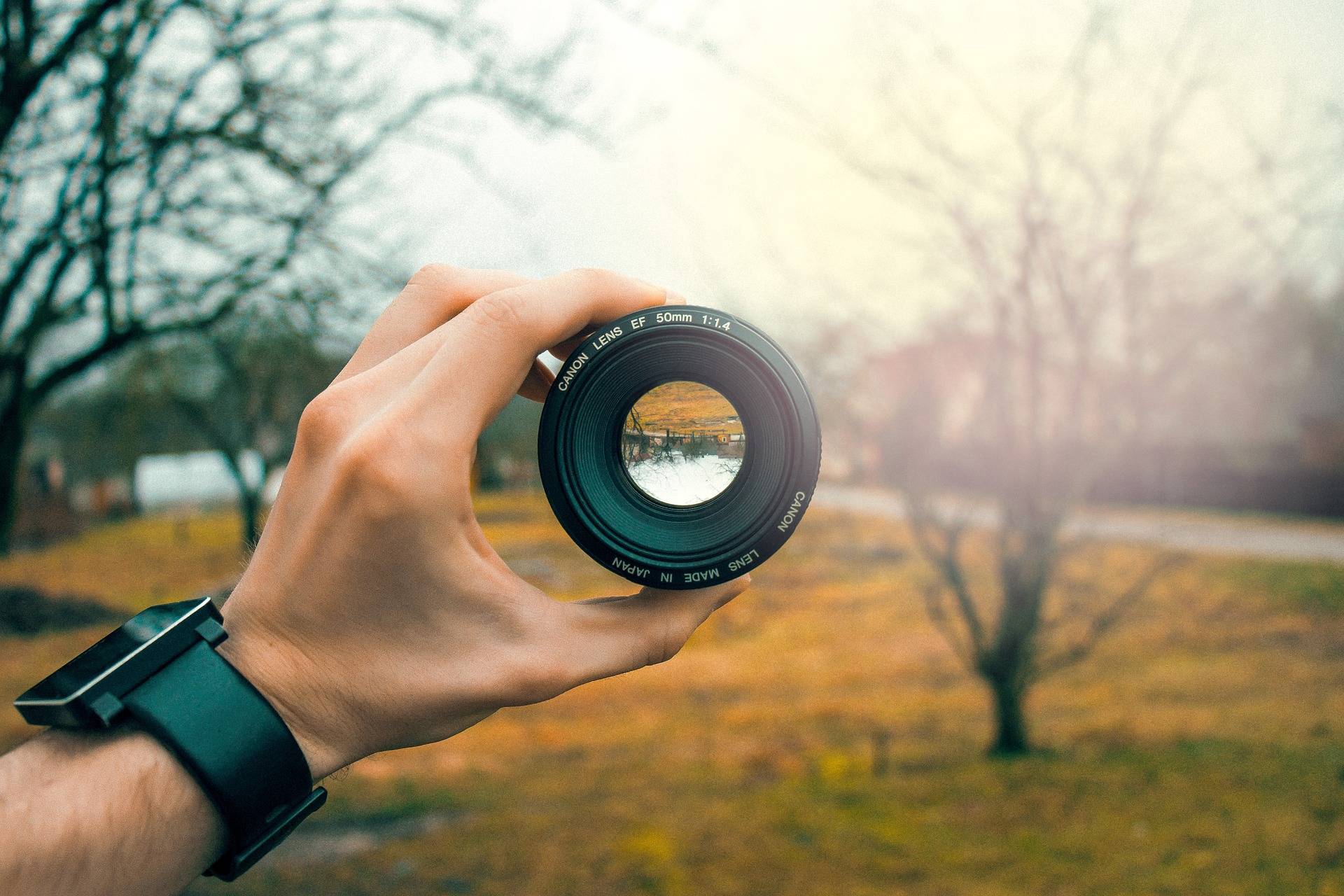Introduction
Photography is a dynamic art form that captures moments, emotions, and stories through light and composition. Among the many techniques used to enhance a photograph, depth of field (DOF) is one of the most powerful. This concept significantly impacts how an image feels. Whether you want a subject in sharp focus with a blurred background or aim for clarity throughout the scene, depth of field plays a key role in shaping the visual effect of your image. Additionally, the Photeeq depth of field feature provides precise control over focus settings, allowing you to achieve the exact look you want with ease.
In this article, we’ll explore what Photeeq depth of field is, why it’s crucial in various types of photography, and how you can use this feature to enhance your images. By mastering depth of field, you will be able to create stunning, professional photos. Moreover, Photeeq’s tools make this process both intuitive and accurate, allowing you to achieve the desired results with ease. Consequently, you will be equipped with the skills and knowledge to elevate your photography to the next level.
What is Depth of Field?
Before diving into the features of Photeeq depth of field, it’s important to understand the basic concept.
Depth of field refers to the portion of an image that appears sharp and in focus. It determines how much of the scene, from the foreground to the background, remains sharp. In other words, depth of field decides whether you want a narrow focus zone (shallow DOF) or a broader one (deep DOF). By understanding this concept, you can control how your images look and feel. Depth of field is influenced by three factors: aperture size, focal length, and the distance between the camera and the subject.
There are two primary types of depth of field:
- Shallow Depth of Field: Only a small portion of the image stays in focus, while the rest becomes blurred. This technique is commonly used in portrait photography, where the subject is sharp, and the background is artistically blurred (often referred to as “bokeh”).
- Deep Depth of Field: A large portion of the scene stays sharp, from the foreground to the background. This effect is typically used in landscape photography.
Main Factors Influencing Depth of Field
Depth of field is determined by three main elements:
Aperture (f-stop)
The aperture controls the size of the lens opening. Specifically, a larger aperture (smaller f-number, like f/1.8 or f/2.8) results in a shallow depth of field, blurring the background while keeping only a small area in focus. On the other hand, a smaller aperture (larger f-number, like f/16 or f/22) increases the depth of field, making more of the scene remain sharp. Therefore, adjusting the aperture allows you to control how much of your image is in focus, giving you greater creative flexibility in your compositions.
Focal Length
Focal length affects depth of field as well. Longer lenses (e.g., 85mm or 200mm) create a shallow depth of field, isolating the subject and blurring the background. Shorter lenses (e.g., 24mm or 35mm) offer a deeper depth of field, keeping more of the scene in focus.
Distance from the Subject
The closer you are to the subject, the shallower the depth of field becomes. As you move farther away, the focus zone becomes deeper, and more of the scene stays sharp. Therefore, the distance from your subject is crucial for determining how much of the scene remains in focus.
Photeeq Depth of Field: A Powerful Tool for Photographers
The Photeeq depth of field feature is an essential tool that helps photographers calculate and control their depth of field. Photeeq offers an intuitive and user-friendly interface, giving you full control over your focus settings. Whether you need a shallow focus to isolate your subject or a deep focus for a broader scene, Photeeq’s tools allow you to achieve the desired effect accurately and with ease.
Key Features of Photeeq Depth of Field
Photeeq offers several tools to simulate, calculate, and adjust depth of field. Let’s take a closer look at these features:
DOF Calculator
Photeeq’s depth of field calculator is one of its most powerful tools. It lets you input parameters like aperture, focal length, and subject distance to calculate the resulting depth of field. Once you enter these values, you can see how they affect your image. The calculator also provides a visual diagram showing the areas of the image that remain in focus, helping you visualize the sharp areas. This tool eliminates guesswork and makes it easier to get precise results.
Depth of Field Preview
The depth of field preview function allows you to visualize the focus area in real-time. This tool shows how adjusting your aperture or subject distance impacts the focus. Therefore, you can see the changes before taking the shot. Whether you need a blurred background for portraits or sharpness across a wide landscape, the preview helps you make quick decisions about your composition. You can adjust your settings promptly to ensure the focus is exactly where you want it.
Lens Simulation
The lens simulation tool in Photeeq lets you experiment with different lenses and focal lengths. This feature helps you see how each lens affects your depth of field and background blur. You can try wide-angle, standard, and telephoto lenses without actually switching them. This helps you visualize how each lens changes focus and blur, enabling you to confidently choose the best lens for your desired effect.
Bokeh Control
Bokeh refers to the quality of the out-of-focus areas in an image. Photeeq gives you complete control over the bokeh effect. You can adjust the smoothness, shape, and intensity of the background blur. This is especially useful for portrait photographers looking for a pleasing background effect or anyone wanting to add an artistic touch to their images. Depending on your preference, you can fine-tune the bokeh to create a soft, dreamy blur or a more defined one.
Real-Time Adjustment
A standout feature of Photeeq is its ability to provide real-time adjustments. As you modify settings like aperture, focal length, or subject distance, you instantly see how these changes affect the depth of field. This allows you to fine-tune your settings efficiently. Whether adjusting the focus zone or modifying the bokeh effect, Photeeq makes the process smooth and precise. Consequently, you save time and avoid trial and error when composing your shot.
Practical Applications of Photeeq Depth of Field
Now that we’ve explored the features of Photeeq depth of field, let’s look at how these tools apply to different types of photography.
Portrait Photography
In portrait photography, shallow depth of field is often used to isolate the subject from the background. By using Photeeq’s DOF calculator and real-time preview, you can experiment with aperture and focal length settings to achieve the perfect background blur (bokeh). Whether you’re using a 50mm f/1.4 or 85mm f/1.8 lens, Photeeq ensures your subject stays sharp while the background remains beautifully blurred. This allows you to create crisp, stunning portraits where the subject stands out, resulting in professional and engaging images.
Landscape Photography
In landscape photography, a deep depth of field is often desired so that the entire scene remains sharp. Fortunately, Photeeq helps you simulate the best settings for achieving deep focus across your entire frame. By adjusting the aperture and focal length, you can use the DOF calculator to find the ideal combination for sharpness throughout the scene. Additionally, real-time adjustments allow you to refine the composition, ensuring every element stays in focus. As a result, Photeeq makes creating breathtaking, clear landscape images effortless.
Macro Photography
Macro photography often requires capturing small subjects up close, which results in an extremely shallow depth of field. Fortunately, Photeeq’s depth of field tools are perfect for macro work, as they let you simulate shallow focus and control exactly which parts of the subject remain sharp. By adjusting settings and previewing the effect in real-time, you can easily ensure that the key details are in focus. As a result, Photeeq helps you capture intricate and precise macro shots with confidence. Consequently, Photeeq helps you capture intricate macro shots with precision and clarity, turning your creative vision into reality.
Product Photography
In product photography, shallow depth of field is often used to isolate the product and create a clean, professional look. Photeeq’s bokeh control and lens simulation features allow you to experiment with different levels of background blur. This flexibility lets you create a background that complements the product without overpowering it. The real-time preview ensures that the product stays sharp while the background remains soft and unobtrusive. Therefore, Photeeq makes it easy to highlight the product and ensure it stands out in every shot.
Conclusion
Mastering depth of field is an essential skill for any photographer looking to elevate their work. Photeeq depth of field tools give you full control over focus and blur, allowing you to visualize and perfect your shots before taking them. By understanding how aperture, focal length, and subject distance impact depth of field, you can fine-tune your settings to create stunning, professional images each time.
Whether you’re shooting landscapes, portraits, or macro shots, Photeeq’s depth of field tools provide the precision you need. With features like real-time previews, lens simulations, and bokeh control, Photeeq depth of field offers flexibility and power to transform your photography. As you experiment with these tools, you’ll bring your creative ideas to life and consistently achieve your desired look.
Frequently Asked Questions
1. What is Depth of Field?
It’s the area in an image that’s in focus. Specifically, it’s controlled by aperture, focal length, and subject distance, which all affect how much of the scene remains sharp.
2. How does Photeeq help with Depth of Field?
Photeeq’s tools let you adjust focus settings easily. Moreover, you can preview results instantly, making it much simpler to control depth of field and fine-tune your shots.
3. What’s the difference between shallow and deep depth of field?
Shallow depth of field blurs the background, which is ideal for portraits, as it isolates the subject. On the other hand, deep depth of field keeps everything in focus, making it perfect for landscapes where you want all elements sharp.
4. How can Photeeq improve my portrait photography?
Photeeq helps you create beautiful background blur (bokeh) effortlessly. As a result, your subject remains sharp and focused, enhancing the overall look of the portrait.
5. Can Photeeq be used for landscape photography?
Yes, it can. In fact, Photeeq helps you achieve sharp focus throughout the entire scene, thereby ensuring that the entire landscape, from foreground to background, remains clear and in focus.
6. What makes Photeeq useful for macro photography?
Photeeq lets you control focus at very close distances. Consequently, it ensures that key details of tiny subjects are sharp, even when dealing with extremely shallow depth of field.
7. How does Photeeq help with product photography?
Photeeq adjusts background blur to your preference, offering flexibility. As a result, it keeps the product in sharp focus, effectively enhancing your product shots by isolating the subject from the background.




